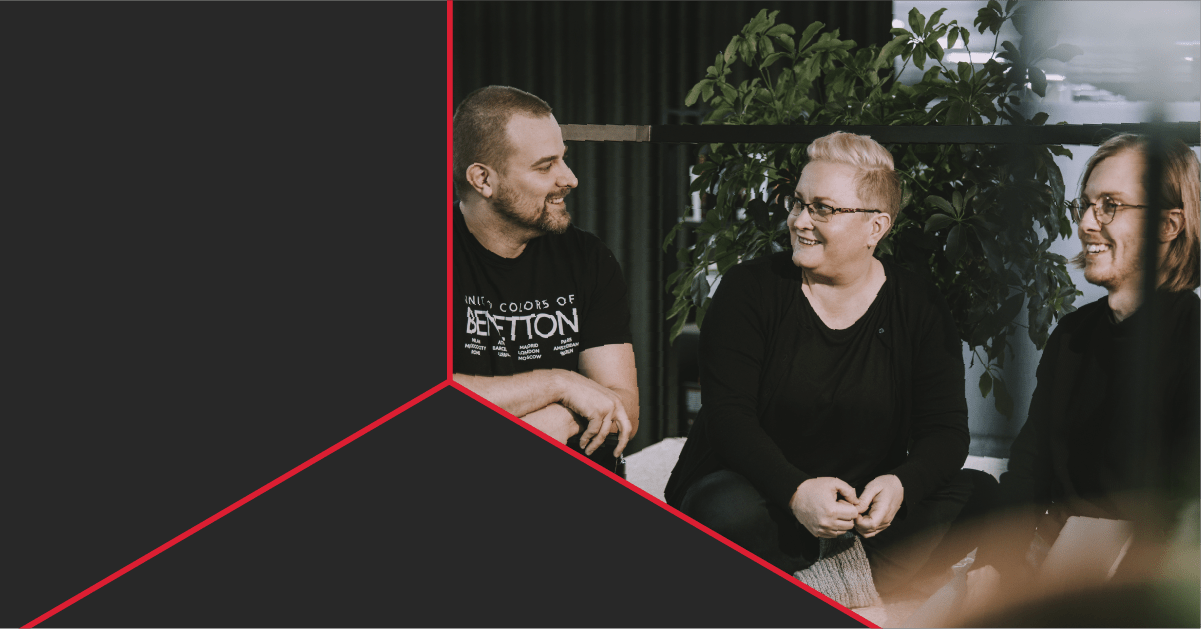Adaptability is key to bringing out the best in people. You can see this throughout how we operate at Solita, for example. We don’t cherish vertical career ladders and hierarchies — instead, we support a ‘flatter’, more horizontal progression.
And we really steer away from pushing people into management roles if they’re averse to it. Besides, as their competence and network of colleagues grow, they tend to naturally make initiatives and even lead others by example.
That was my experience, anyway.
Tech is there to help people, not the other way round.
I got my first taste of the problem-solving element of the data expert job when I first started out back in ‘97. I’d just begun my career in IT, maintaining a small lab of systems, email servers, and firewalls (very exciting and new, back then). But I was already taking an interest in data — and how it could be used to make people’s jobs easier.
At the time, the business I worked at was publishing papers all around the world – and they needed to know what countries they were sending each publication to, and when. How were they tracking this information? Well, it was the 90s — everything was done with pen and paper.
So I told them: “Show me your workflow, and maybe I can help you.” And they showed me all the handwritten notes and files they used for bookkeeping.
An easy fix, we know now. I set them up with a database, so they could pull information and generate reports much more easily. And I saw the impact of automation firsthand — how it made their job so much faster and more enjoyable.
That was my ‘wake up’ moment — the moment I realised I could make real change and help people through my work in data.
Tl;dr: Tech is about people and I loved it immediately.
That element of ‘fixing’ things and solving tricky challenges is probably why a lot of us chose this career path.
Which is why it can be jarring to go from that (solving data issues) to the pastoral care requirements of being a full-time People Lead (solving human problems).
My experience of the manager role at Solita
My career at Solita started out with the position of Data Warehouse Developer. After a year or two, I was then asked if I would be interested in taking up the role of team manager. (I was.)
The People Lead works as a coach and keeps the consultants connected with Solita’s culture, and helps them in problem solving when necessary. But my team was a highly autonomous and agile team of data professionals — which meant that I worked as a People Lead when required, but spent the rest of my time at the customer site, delivering tech solutions.
It’s exactly how Mårten Mickos put it: In the Player-Coach role, “About half of your time, you’ll continue to be an individual contributor doing the job you did. The other half, you’ll spend managing and leading a small team. The good news is that you are not thrown 100% into leadership. You can continue to do what everyone knows you do well.”
And it’s true. Over the five years that I was a People Lead, I found that the ‘coach’ element of the role took something from 10% to 50% of my monthly work time.
From People Lead back to Individual Contributor
Giving up the responsibility of being a People Lead wasn’t about disliking people or not wanting to be a mentor. I still wanted to help others.
But I felt the best use of my time at the moment was in being an Individual Contributor — a skilled practitioner who focuses on client work, but who is open to helping others when needed.
And this is where I was particularly grateful to be part of the team at Solita. Initially, I worried that I might struggle to go back to being a non-manager.
Would my relationships with my old team survive the transition?
Would people think less of me for taking a ‘step back’?
In the end, I didn’t have anything to be concerned about. And I think that’s something unique about the culture at Solita: not only are people nice, but you get treated as who you are; an adult who can make your own decisions about your life and your career path.
I feel that, during my career as a People Lead, I gave my input for better leadership in general. And it is totally okay to withdraw and go back to being a full-time customer consultant again. There are no bridges burned.
The diversity of leadership just gets stronger.
If that sounds like the sort of place you’d like to be, check out our careers page — maybe there’s something for you (whether you’re a manager or an individual contributor).


